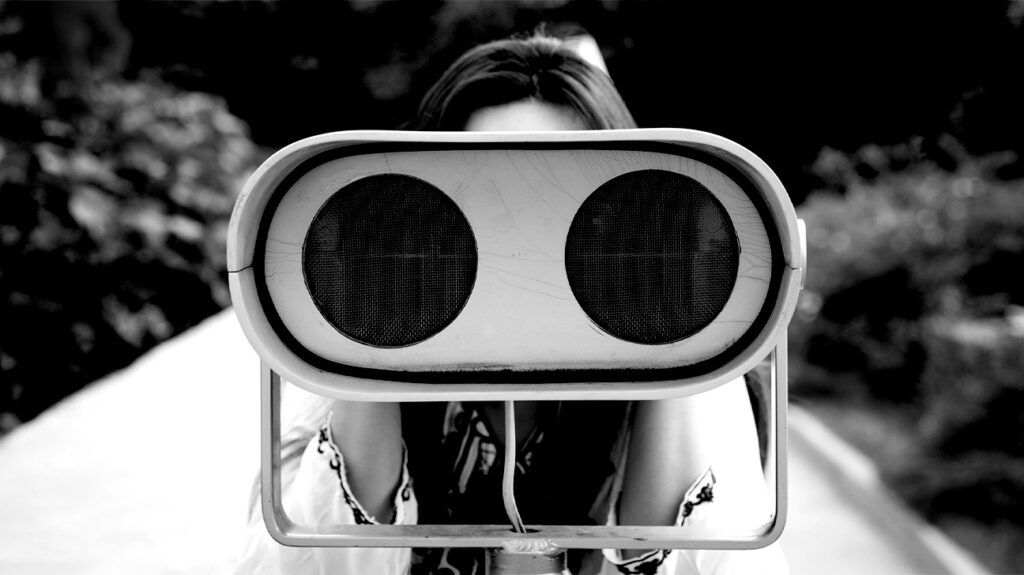Binocular vision dysfunction (BVD) is a condition that affects vision. It can cause a range of symptoms, such as double vision, light sensitivity, pain with eye movement, and more.
BVD makes it difficult for the eyes to work together. Misalignment of the eyes can make it difficult for images to appear clearly. The condition can also affect coordination.
This article will explore some of the most common BVD symptoms.
Keep reading to learn about how to recognize these symptoms, how to manage them, and more.

BVD causes misalignment between the eyes. This can make it difficult for individuals to see a clear picture.
Visual symptoms of BVD may include:
- double vision
- blurry vision
- sensitivity to light
- pain with eye movement
- eyestrain
- squinting
People with BVD may find it difficult to read books or computer screens. It may be especially difficult to make out images in dimly lit settings such as movie theaters.
BVD can make it harder to carry out day-to-day activities, and the visual effects of BVD may affect performance at work or school. These and other symptoms can also interfere with driving or other routine tasks.
Some individuals with BVD develop pain. The pain related to BVD can occur during eye movement. Certain types of muscle pain may also occur as a result of the condition.
BVD
Learn about what else can cause eye pain.
In addition to symptoms affecting vision, BVD can also cause:
- pain in the neck, shoulders, or back
- dizzy spells
- nausea
- uncomfortable feeling in the cheeks or sinus area
- repeatedly falling over
- problems with concentration or attention
- reading difficulties
- anxiety
Visual processing difficulties can make it difficult to recognize words. They may also affect an individual’s ability to remember what they read.
These symptoms can affect individuals of all ages. Children with BVD may experience reading difficulties in the classroom. Adults with BVD may develop blurry vision or headaches after a day spent working in front of a screen.
Learn about the link between vision problems and dizziness.
BVD may make many daily activities more challenging. This can lead to negative effects on an individual’s quality of life.
For example, adults with BVD may experience symptoms that interfere with driving. This can lead to anxiety around driving a car, even in familiar areas.
Children and young adults with BVD may have symptoms that affect school performance. These symptoms can cause difficulties with reading comprehension or concentration.
Headaches, blurry vision, and eyestrain can all make daily tasks more difficult.
Each case of BVD may require individualized treatment. Management for this condition can include the use of visual aids or certain therapeutic approaches.
In a 2021 study, researchers examined the use of vision therapy among individuals with BVD. These people received weekly vision therapy with medical professionals and performed daily exercises at home. After 10 weeks, BVD symptoms decreased among study participants.
Prism lenses may also help address symptoms. These specially designed lenses help correct eye misalignment resulting from BVD. In certain cases, prism lenses can improve vision and reduce eyestrain for people with the condition.
Anyone experiencing new or worsening vision problems should visit a medical professional. Blurry vision, recurring headaches, or neck and shoulder pain may indicate BVD.
Other visual symptoms that can indicate a serious condition include:
- double vision
- vision loss
- sudden vision changes
Individuals experiencing these symptoms should contact a doctor to find out more. A doctor can perform an examination and determine the cause of any vision changes.
A person should seek immediate medical help if they suddenly lose vision.
Can binocular vision dysfunction come on suddenly?
The rate at which BVD develops can vary widely between individuals. In some cases, the eye condition may develop slowly over time. In others, BVD can occur as a result of a traumatic brain injury such as a concussion.
Is there a binocular vision dysfunction test at home?
Only a medical professional can test a person for BVD. Doctors
Are there any binocular vision dysfunction home remedies?
Management of BVD symptoms requires professional support. Individuals with this condition should consult a doctor before attempting at-home remedies.
Home-based exercises may help improve BVD symptoms. With proper medical guidance, home remedies may provide an effective addition to professional care.
What is the most common binocular vision disorder?
The
Can binocular vision dysfunction be corrected?
Different treatment strategies can help correct BVD. Certain types of lenses, known as prism lenses, may reduce symptoms. Vision therapy can also improve vision among people with BVD.
What neurological disorders cause binocular vision dysfunction?
Some neurological disorders can trigger BVD in certain people. These include stroke, concussion, and other types of traumatic brain injuries.
Binocular vision dysfunction (BVD) is a condition that prevents the eyes from working together properly. People with BVD may experience visual symptoms such as blurry vision, eyestrain, and light sensitivity.
BVD can also cause muscle pain or pain during eye movement. These and other symptoms can negatively affect quality of life.
People with BVD can work with their doctor to develop strategies to manage symptoms. Prism lenses and vision therapy may help manage symptoms of BVD.
